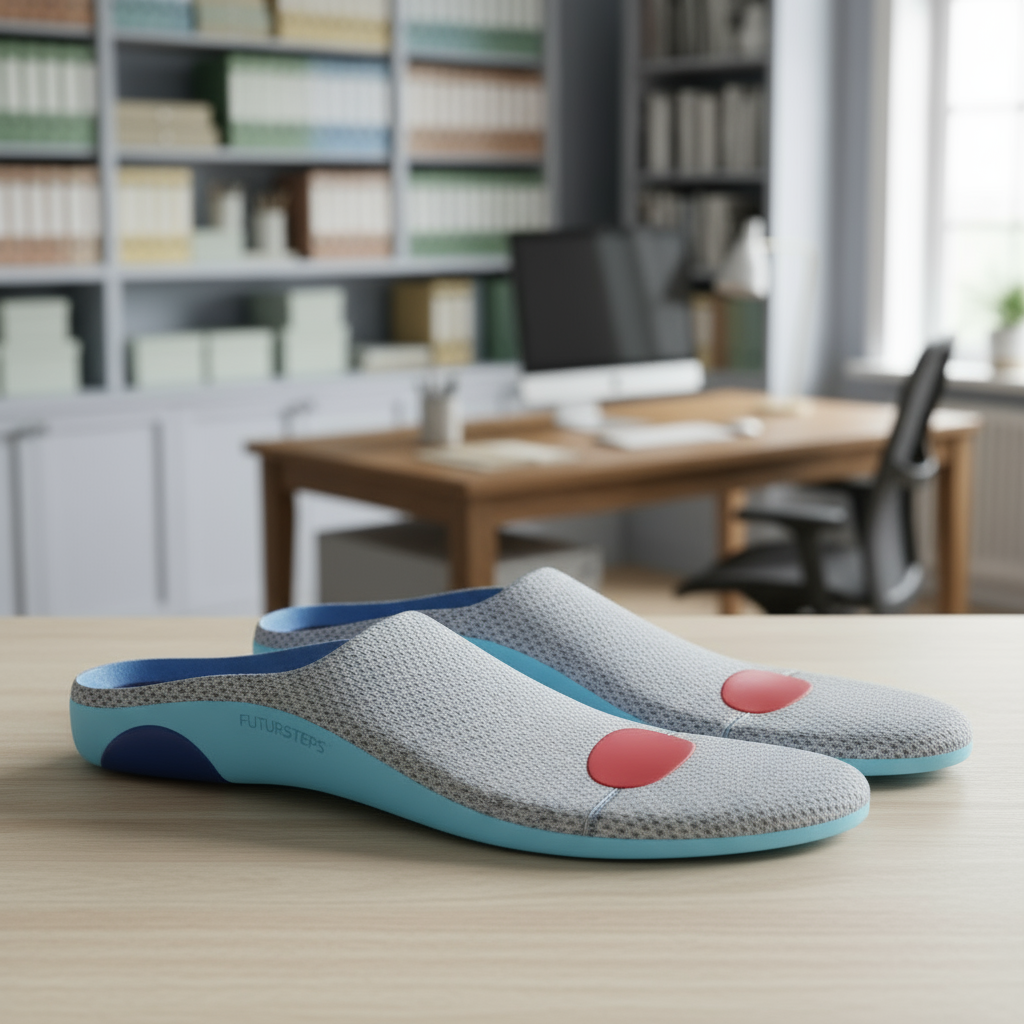Understanding Plantar Fasciitis
Plantar fasciitis is a common foot condition that causes sharp pain in the heel and arch area. It occurs when the plantar fascia—a thick band of tissue that runs across the bottom of your foot—becomes inflamed or strained. This pain is often worst in the morning or after long periods of standing or walking. Factors such as poor footwear, obesity, long hours on hard surfaces, and flat feet can contribute to the development of plantar fasciitis.
While treatments like stretching, rest, and ice can help, one of the most effective and affordable ways to relieve pain is by using high-quality insoles designed for plantar fasciitis.
Why Insoles Are Essential for Plantar Fasciitis
Insoles, or orthotic inserts, play a vital role in reducing heel and arch pain by improving the way your feet absorb impact. They help distribute pressure evenly, support the arch, and align the foot correctly, reducing stress on the plantar fascia. Unlike regular shoe inserts, plantar fasciitis insoles are engineered with targeted cushioning and structural support that address the root cause of discomfort.
Here’s how insoles help:
-
Arch Support: Keeps the foot in a natural position and reduces overstretching of the fascia.
-
Heel Cushioning: Absorbs shock from every step to ease pain in the heel.
-
Pressure Distribution: Prevents excessive strain on specific parts of the foot.
-
Improved Posture: Promotes better alignment and reduces knee, hip, and back pain.
How to Choose the Right Insoles
Selecting the right insoles for plantar fasciitis is crucial to achieving real relief. Consider the following factors before making your choice:
-
Arch Type
Everyone’s foot shape is different—some have high arches, others flat feet. Choose insoles that match your arch type to ensure proper support and alignment. -
Material Quality
Look for insoles made from durable materials like medical-grade foam, EVA, or gel. These materials provide long-lasting cushioning and maintain their shape even after months of use. -
Heel Cup Design
A deep heel cup stabilizes the heel and keeps your foot in the right position, minimizing excessive movement that can worsen pain. -
Fit and Size
Always ensure that the insoles fit snugly inside your shoes. Trim-to-fit models are a great option for a personalized fit. -
Breathability
If you spend long hours on your feet, choose insoles with moisture-wicking and breathable materials to keep your feet cool and dry. -
Activity Level
Insoles for daily walking differ from those made for running or sports. Choose one tailored to your activity for optimal performance and comfort.
How to Use Plantar Fasciitis Insoles Effectively
Simply placing insoles in your shoes is not enough—you need to use them correctly for maximum results.
-
Gradual Introduction
Start by wearing your insoles for an hour or two each day, then gradually increase the duration. This allows your feet to adjust to the new support. -
Replace Old Insoles Regularly
Over time, insoles can lose their shape and effectiveness. Replace them every 6–12 months, depending on wear and activity level. -
Pair Them with Supportive Footwear
Avoid flat or unsupportive shoes. Choose footwear with firm soles and enough room for the insoles to fit comfortably. -
Stretch Regularly
Combine the use of insoles with daily stretching exercises for your calves and plantar fascia to enhance recovery. -
Consult a Podiatrist
If pain persists despite using insoles, consult a foot specialist to ensure there’s no underlying condition requiring additional treatment.
Top Benefits of Using Plantar Fasciitis Insoles
-
Reduces daily heel pain and inflammation
-
Improves posture and gait
-
Enhances comfort during standing or walking
-
Prevents recurrence of plantar fasciitis
-
Promotes long-term foot health
Conclusion
Plantar fasciitis can be frustrating and painful, but relief is within reach. The right insoles can transform your daily comfort, support your arches, and help you stay active without pain. By understanding your foot type, selecting the correct insoles, and wearing them properly, you can significantly reduce symptoms and prevent future flare-ups.
Investing in a pair of quality plantar fasciitis insoles is not just about comfort—it’s about improving your overall foot health and quality of life.



